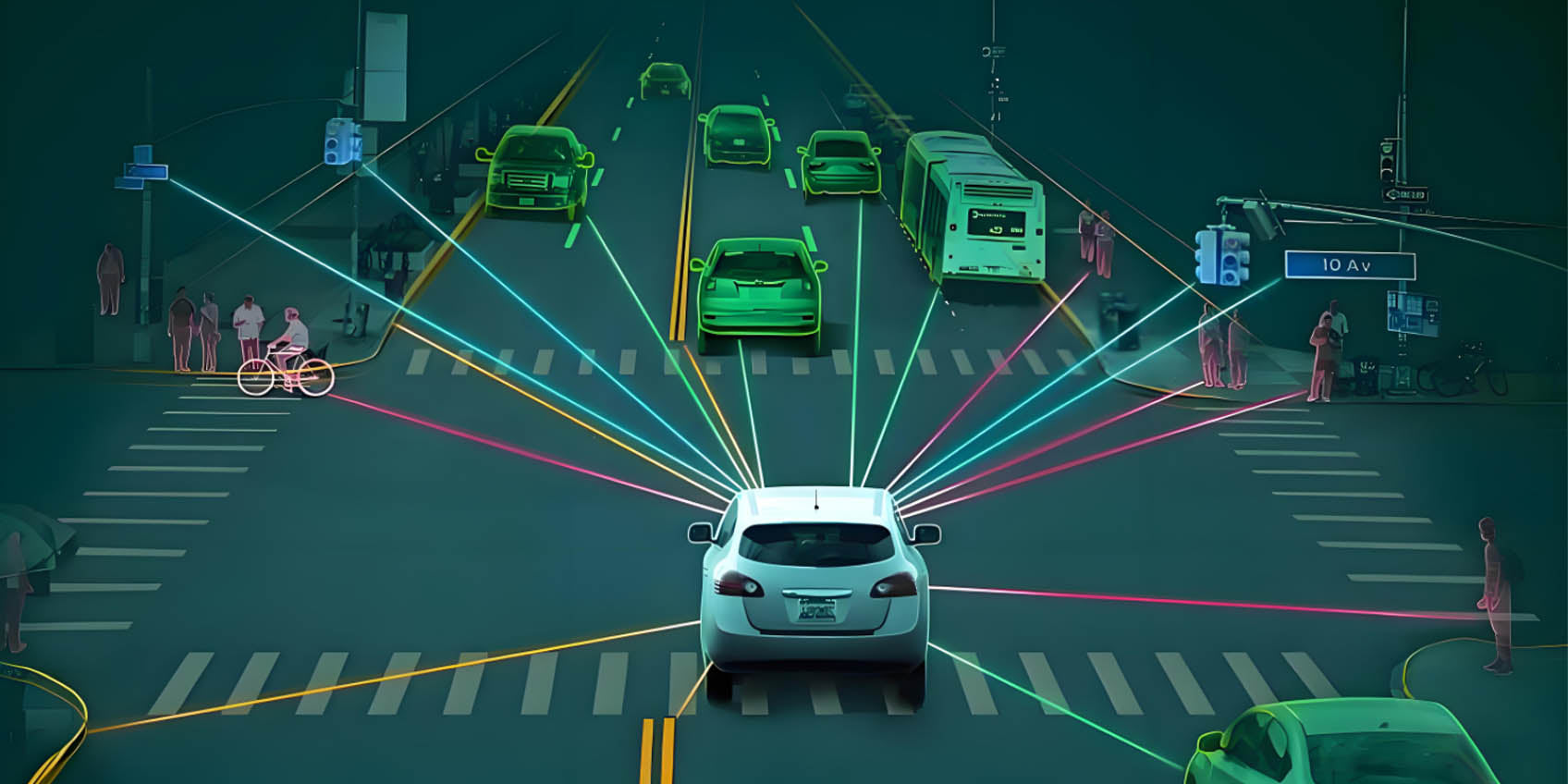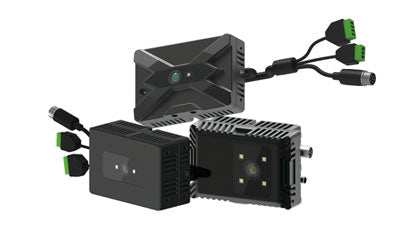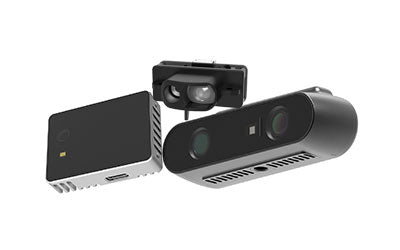AI-Powered Sensors:Transforming Perception & Boosting Smart Automation

The rise of Artificial Intelligence (AI), Machine Learning (ML), and the Internet of Things (IoT) has paved the way for the development of AI-powered sensors, which are now integral components of advanced smart systems. These sensors combine cutting-edge sensing technologies with powerful AI algorithms to enable real-time data analysis, intelligent decision-making, and improved automation across various sectors. From smart manufacturing and healthcare to autonomous vehicles, environmental monitoring, and smart homes, AI-powered sensors are enhancing the perception capabilities of devices, allowing them to act with greater precision and autonomy.
What Are AI-Powered Sensors?
AI-powered sensors represent a significant leap forward in sensor technology. These sensors integrate AI algorithms with traditional sensing mechanisms, allowing them to process data locally and make decisions in real-time. Unlike conventional sensors, which only collect raw data and relay it, AI sensors have the ability to analyze complex patterns, predict future outcomes, and adapt to environmental changes automatically without constant human input.
AI-powered sensors are capable of:
- Real-time environmental perception and adaptation.
- Autonomous decision-making based on deep learning.
- Predictive analytics for early issue detection.
These sensors are deployed in numerous applications, including smart homes, automotive systems, healthcare, security systems, industrial automation, and environmental monitoring, where they significantly enhance operational efficiency, accuracy, and responsiveness.
Key Technologies Behind AI-Powered Sensors
1. Deep Learning and Real-Time Data Processing
AI-powered sensors use deep learning models that allow them to analyze vast amounts of data and continuously improve their decision-making capabilities. This helps AI sensors automatically adjust their settings and operations based on real-time environmental data. For example, in smart factories, AI sensors can detect anomalies in machinery operations, predict potential malfunctions, and prevent costly downtime through predictive maintenance.
In smart homes, these sensors are capable of monitoring environmental conditions like temperature, humidity, and light levels, making adjustments to HVAC systems and lighting based on user behavior to optimize comfort while reducing energy consumption.
2. Computer Vision and Image Recognition
Computer vision is another cornerstone technology in AI-powered sensors, enabling devices to process and analyze visual data from cameras or other optical sensors. By applying image recognition algorithms, AI sensors can identify and track objects in real-time, perform facial recognition, and detect suspicious activities in security systems.
For example, smart security cameras equipped with AI-powered sensors can not only recognize faces but also differentiate between people, animals, or moving objects. This provides more accurate surveillance and reduces false alarms, enhancing home security.
3. Sensor Fusion: Enhanced Accuracy and Reliability
To maximize performance, AI-powered sensors rely on sensor fusion, a technology that integrates data from multiple sensor types, such as temperature sensors, humidity sensors, cameras, LiDAR, and radar systems. This approach allows for a more accurate and comprehensive understanding of the environment.
In autonomous vehicles, sensor fusion helps combine data from LiDAR, cameras, and radar to create a 360-degree awareness of the surroundings, enabling vehicles to safely navigate roads and detect obstacles in real-time.
Applications of AI-Powered Sensors
1. Smart Manufacturing and Automation
In the manufacturing industry, AI-powered sensors are revolutionizing production lines by enabling predictive maintenance, automated quality control, and real-time monitoring of equipment. For example:
- Health monitoring: AI sensors can assess the health of machinery, identify wear and tear, and schedule preventive maintenance before breakdowns occur.
- Automated defect detection: AI sensors inspect products on assembly lines, using visual recognition to identify defects like scratches, cracks, or dimensional discrepancies in electronics manufacturing or automotive production.
These capabilities contribute to increased efficiency, reduced costs, and higher product quality, making manufacturing smarter and more reliable.
2. Smart Homes and IoT Integration
AI-powered sensors are crucial in smart homes, where they enable a variety of automated functions based on real-time data:
- Smart temperature and lighting control: AI sensors adjust thermostats, heating, and lighting based on room occupancy, weather conditions, and user preferences.
- Home security: AI sensors in security cameras use image recognition and motion detection to send alerts when unusual activity is detected, enhancing home safety without human intervention.
The integration of these sensors into IoT systems provides interconnected, responsive environments, offering both convenience and energy savings.
3. Autonomous Vehicles and Smart Transportation
AI-powered sensors are fundamental in autonomous driving systems, where they enable:
- Environmental perception: By fusing data from LiDAR, radar, and cameras, these sensors help vehicles detect obstacles, read traffic signs, recognize pedestrians, and avoid collisions.
- Real-time navigation: AI sensors help vehicles plan their path, reroute when necessary, and ensure safe operation under various conditions, including harsh weather.
This technology is also being used in smart traffic systems, where sensor networks optimize traffic flow, reduce congestion, and improve public transportation systems.
4. Healthcare and Medical Applications
AI-powered sensors are transforming healthcare by enabling continuous monitoring of vital signs and health conditions:
- Wearable health sensors track heart rate, blood pressure, and blood oxygen levels, sending real-time data to healthcare providers for analysis and early intervention.
- Medical imaging sensors use AI-powered algorithms to analyze X-rays, CT scans, and MRIs, offering doctors intelligent diagnostic suggestions and improving diagnostic accuracy.
In robot-assisted surgery, AI sensors help robots make precise movements in real-time, enhancing the quality and success rate of surgeries.
5. Environmental Monitoring and Sustainability
AI-powered sensors are being used for environmental monitoring to ensure public safety and sustainability:
- Air quality monitoring: AI sensors track harmful pollutants like PM2.5, CO2, and NO2 in the air, helping cities and industries take timely action to improve air quality.
- Water quality detection: AI-powered sensors analyze water sources for chemical contaminants and ensure safe drinking water.
By improving the accuracy and efficiency of environmental monitoring, AI-powered sensors support efforts in environmental conservation and public health protection.
Future Trends of AI-Powered Sensors
1. Higher Precision and Adaptability
As AI algorithms and sensor technology advance, AI-powered sensors will offer increased precision in various fields, from autonomous driving to healthcare diagnostics. Their adaptive learning abilities will also improve, enabling them to continually optimize performance based on new data and environments.
2. 5G and Edge Computing Integration
The adoption of 5G technology will provide faster data transmission, allowing AI sensors to process data in real-time with lower latency. When combined with edge computing, where data is processed closer to the source, AI sensors will achieve even faster and more responsive actions, driving innovation in smart cities, healthcare, and industrial automation.
3. Multi-Function Sensor Integration
AI-powered sensors will evolve to combine multiple functions, enabling them to handle tasks like speech recognition, image processing, and environmental sensing simultaneously. This multi-functionality will enhance system efficiency and broaden the applications of these sensors.
4. Privacy and Security Enhancements
As AI-powered sensors become ubiquitous, they will increasingly handle sensitive data. To protect privacy and security, future sensors will incorporate advanced encryption methods and AI-driven anomaly detection to ensure that user data remains secure.
Conclusion: AI-Powered Sensors Paving the Way for Smart Automation
AI-powered sensors are at the heart of the smart revolution, driving industries toward more intelligent, adaptive, and efficient operations. With innovations such as increased precision, sensor fusion, 5G integration, and self-learning capabilities, these sensors will continue to push the boundaries of what's possible in smart manufacturing, healthcare, autonomous vehicles, and environmental monitoring. As AI-powered sensors continue to evolve, their potential to transform industries will only grow, making them essential for the future of intelligent automation.
Synexens Industrial Outdoor 4m TOF Sensor Depth 3D Camera Rangefinder_CS40p
After-sales Support:
Our professional technical team specializing in 3D camera ranging is ready to assist you at any time. Whether you encounter any issues with your TOF camera after purchase or need clarification on TOF technology, feel free to contact us anytime. We are committed to providing high-quality technical after-sales service and user experience, ensuring your peace of mind in both shopping and using our products.
-
Posted in
CS40P






